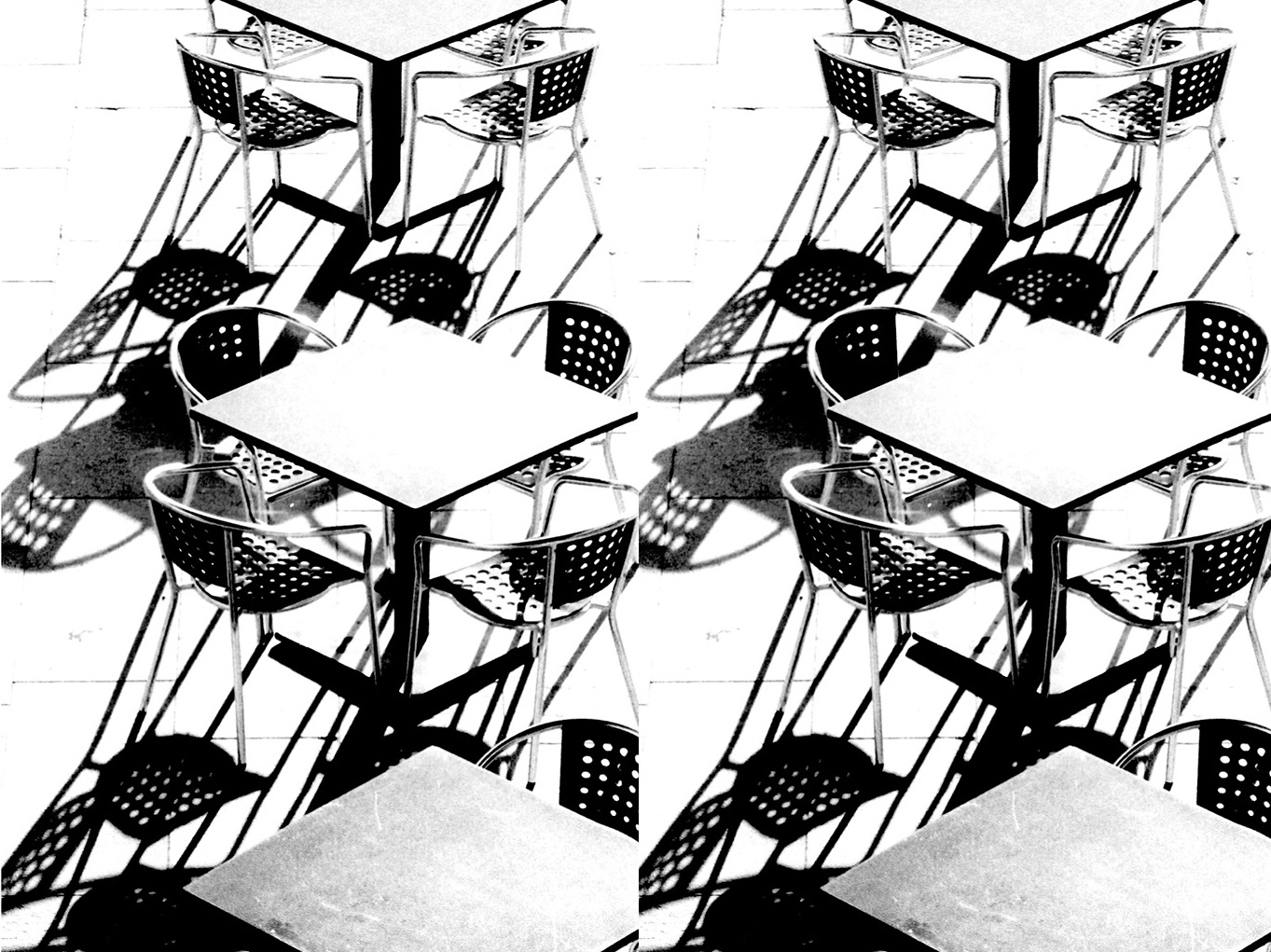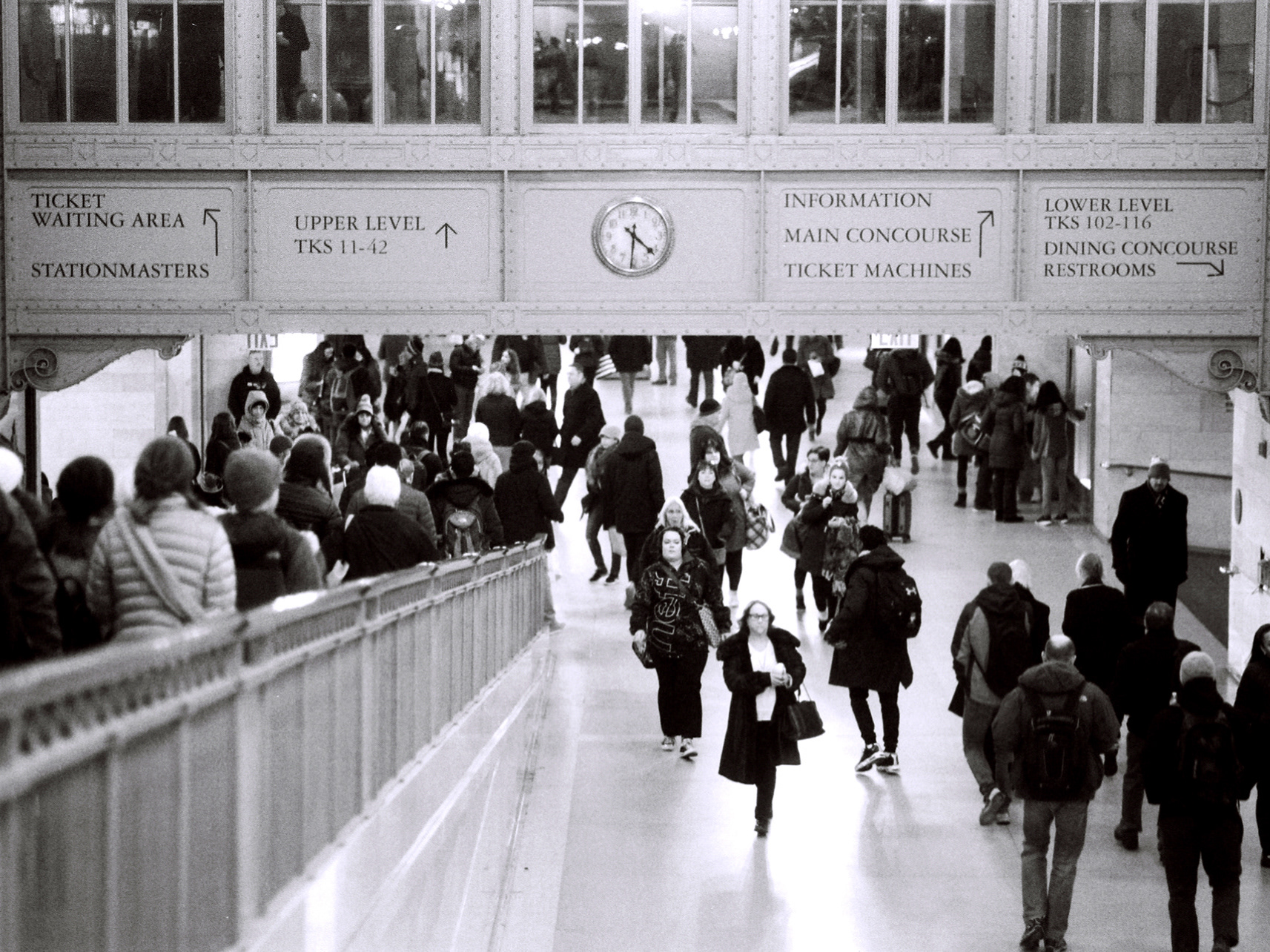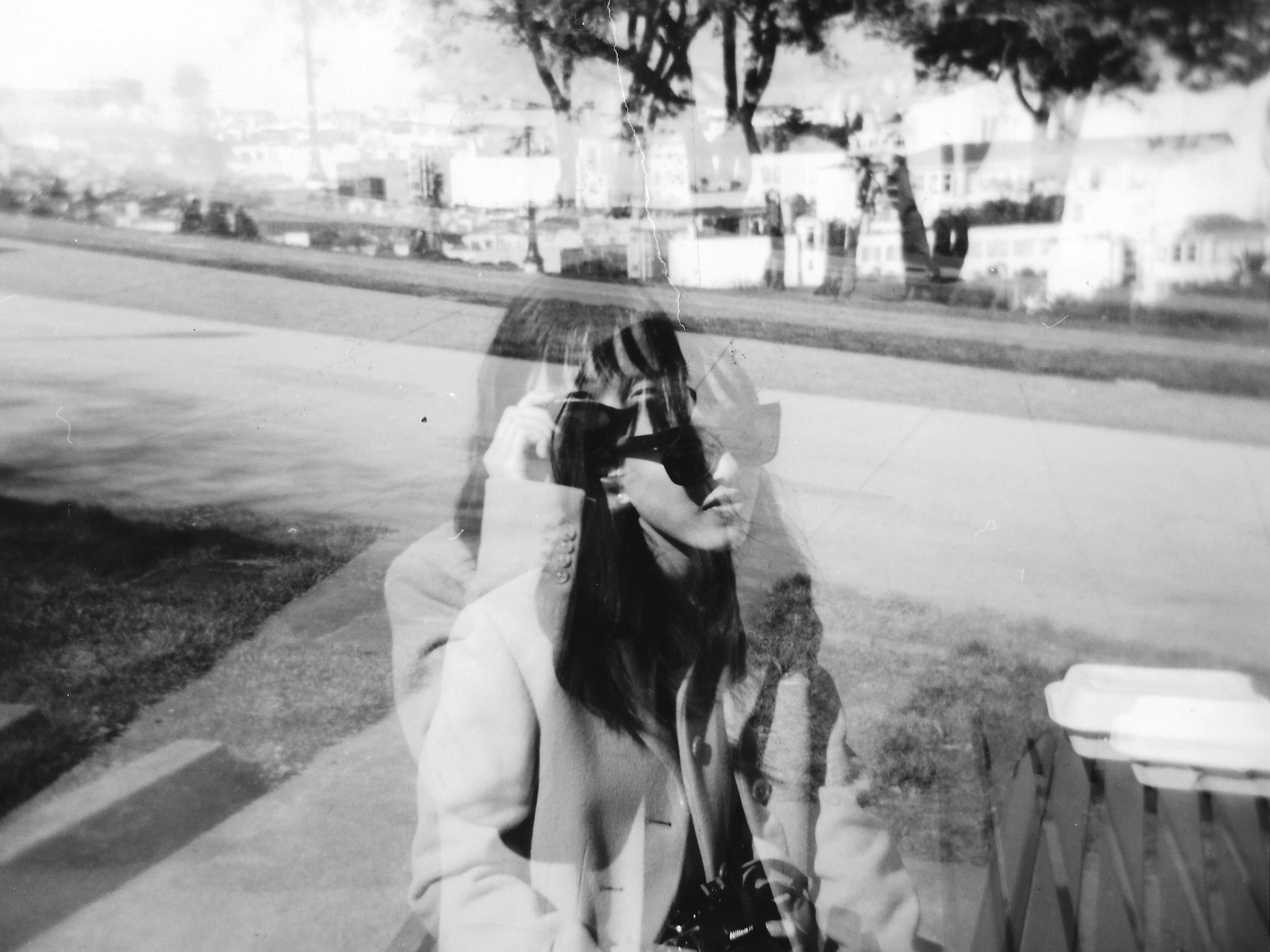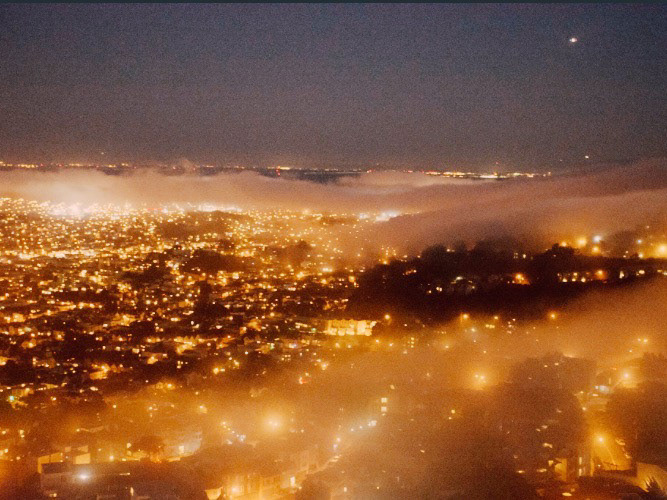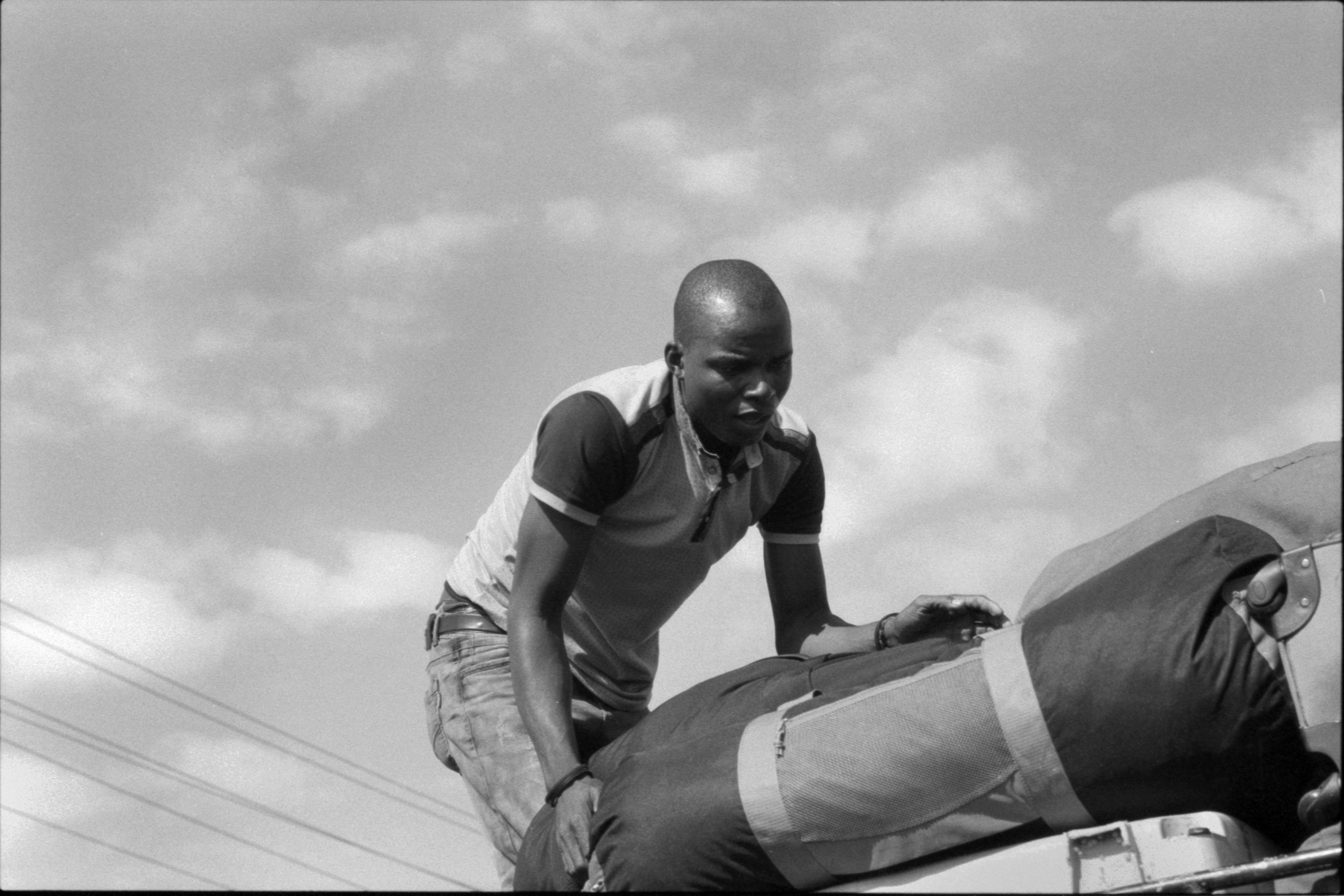
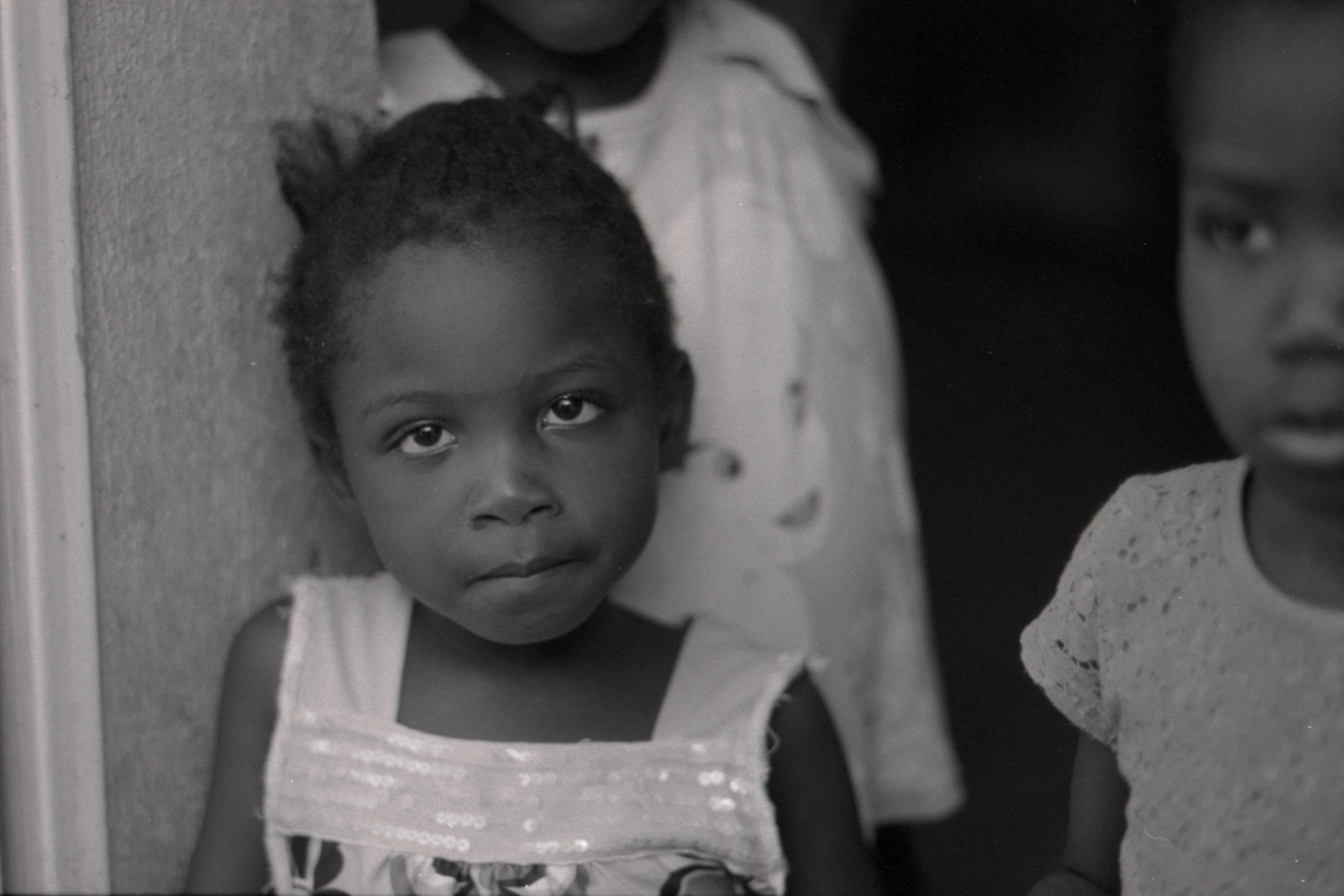
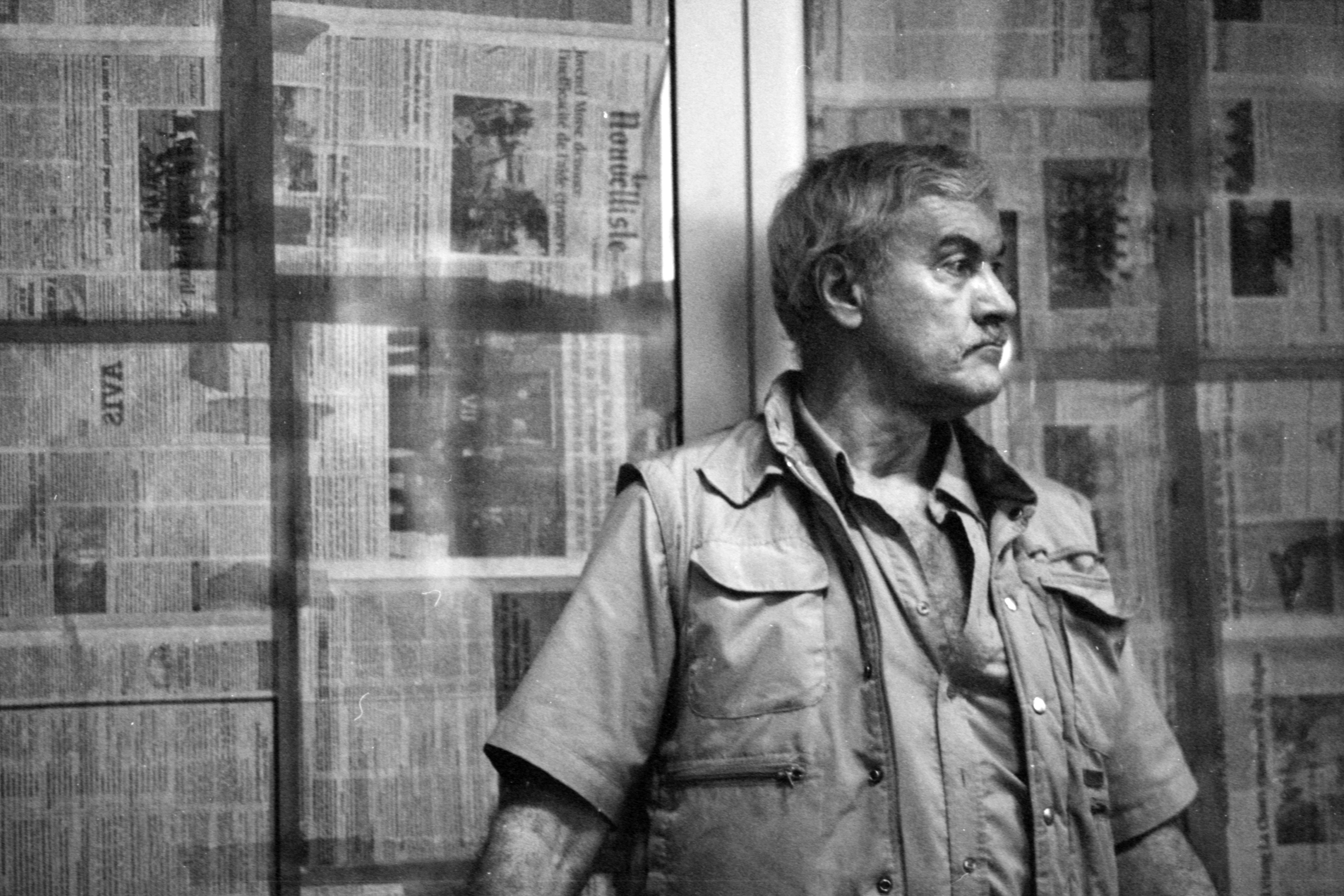
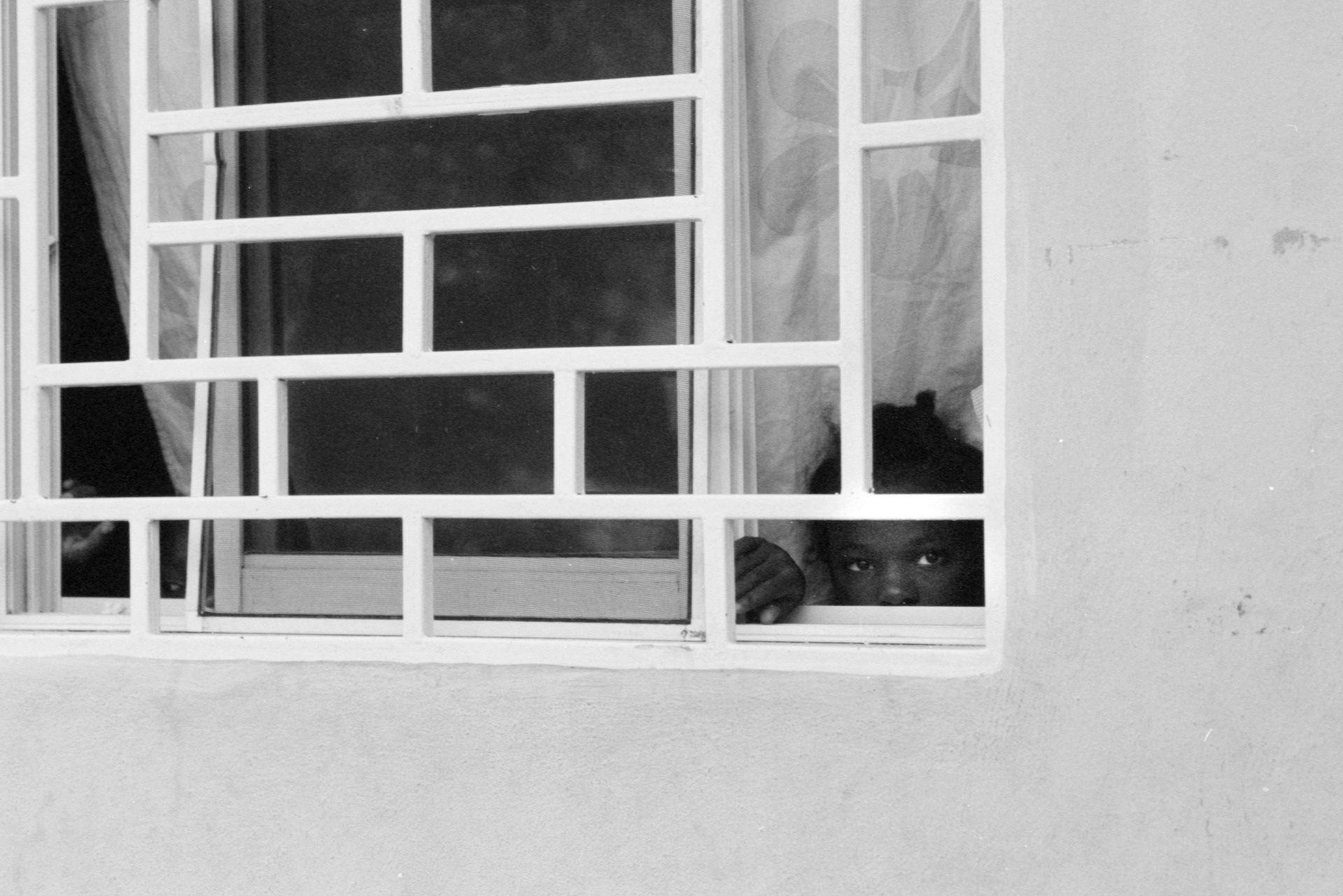
Taken from the car window while driving through an alley leading to the place we were staying at. When in Port-Au-Prince, we stay in Rea's home, whose story can't be told in so little sentences but is absolutely wonderful and the person who works hard to home girls whose parents are unable to take care of them as well as provide education for people of all sorts. People like us, alumni from the club at their universities, and a woman we work with named Neely all work each year to fund new projects and improve the home and the school buildings.
A woman poses at the new school building, CESAH, which our group has been helping build from the ground for years. It's set to open this fall (of 2018), and not only will educate and feed many children but also offer classes for adults who were unable to get an education in their youth. Rea's sister also operates a small boutique next door.
Words both political and simple fill the walls and streets of Port-Au-Prince; here, "Haiti must be saved".
Left; the image of a man in suit-and-tie eating at Epi d'Or, a fast food chain in Haiti, viewed between the shoulders of two Americans. Right; Megan Blach carries two girls. The girls whose home we resided in were entranced with our cellphones, and she shows them a game.
Anne-Sophie and Dienika Franceska photograph each other with a visitor's smartphone in the courtyard of home.
Esterline insists I photograph her with part of her family- two of her caretakers and Rea's husband.
One aspect of Haitian culture that strongly juxtaposes its American counterpart is the blatant celebration of life- parades filled with music and chanting are held in honor of the dead. Many cultures outside the States view death as an opportunity to celebrate a life well-lived rather than mourn a loss all decked-out in black. This psychedelic triple-exposure is an attempt to capture the brightness that living is viewed in the country and the festivity with which they approach each encounter with. The overlapping images also suggest both the fleeting nature of living, especially while living in danger, as well as the movement of dance and song in celebration.
SAKALA is an afterschool program in Cite Soleil, one of the most impoverished neighborhoods in Port-Au-Prince. When driving through this "city of sun", the landscape is cluttered with small shacks, lots of people, and children and animals alike walking around huge, steaming hot patches of landfill. SAKALA provides a place afterschool for kids to play and be encouraged to do their very best without getting into gangs.
The brains behind SAKALA, Daniel, grew up in Cite Soleil himself, so he understands what the kids need to lift themselves from poverty. However, for many of them, this starts with something as simple as an extra meal each day. The smell of hot food entices the children after school, who flock to SAKALA to play soccer, practice chess, dance, play, and eat.
One of the programs SAKALA has is providing their most dedicated students with a variety of extracurricular activities. Here, young boys are learning how to play chess. Other activities include music, such as the recorder or violin, or sports, such as ping pong or volleyball. One of the older girls of SAKALA has won national competitions in table tennis!
All the children in Port-Au-Prince were always happy to meet new visitors and eager to be photographed. This boy in particular had a bit of an affinity with using my camera.
Two boys eating bread in the garden. The creators of SAKALA built this garden in the location, looking very much like the favelas of Rio. The planters painted red and blue in the background are actually old tires, cut up and used as planters.
Our hand-clapping companions watch the ongoing soccer game with interest. Each year, the Los Altos delegation plays a soccer game against the kids at SAKALA. Daniel says that showing that they're as good (or often better) than foreign visitors really boosts morale and gives kids confidence to do well. Furthermore, SAKALA is big on encouraging girls to play soccer as well. Daniel eagerly tells us that two alumni of SAKALA have gone on to join the Haiti national women's team, who recently defeated Canada.
The teens of SAKALA practice in their dance troupe after school.
SAKALA
We finished up the paintjob as part of our trip in spring 2018, and the girls are brought to see their house for the first time. Rea instructs them to follow each other in a train line, hands on shoulders.
Cristina is the youngest of the group at age 4, depicted here playing with Hannah in the new house.
Dalina takes selfies with Neely, a resident of EPA who funded the new home.
A girl takes her shoes off in preparation to try the new clothes a Girl Scout troop in EPA sent over.
